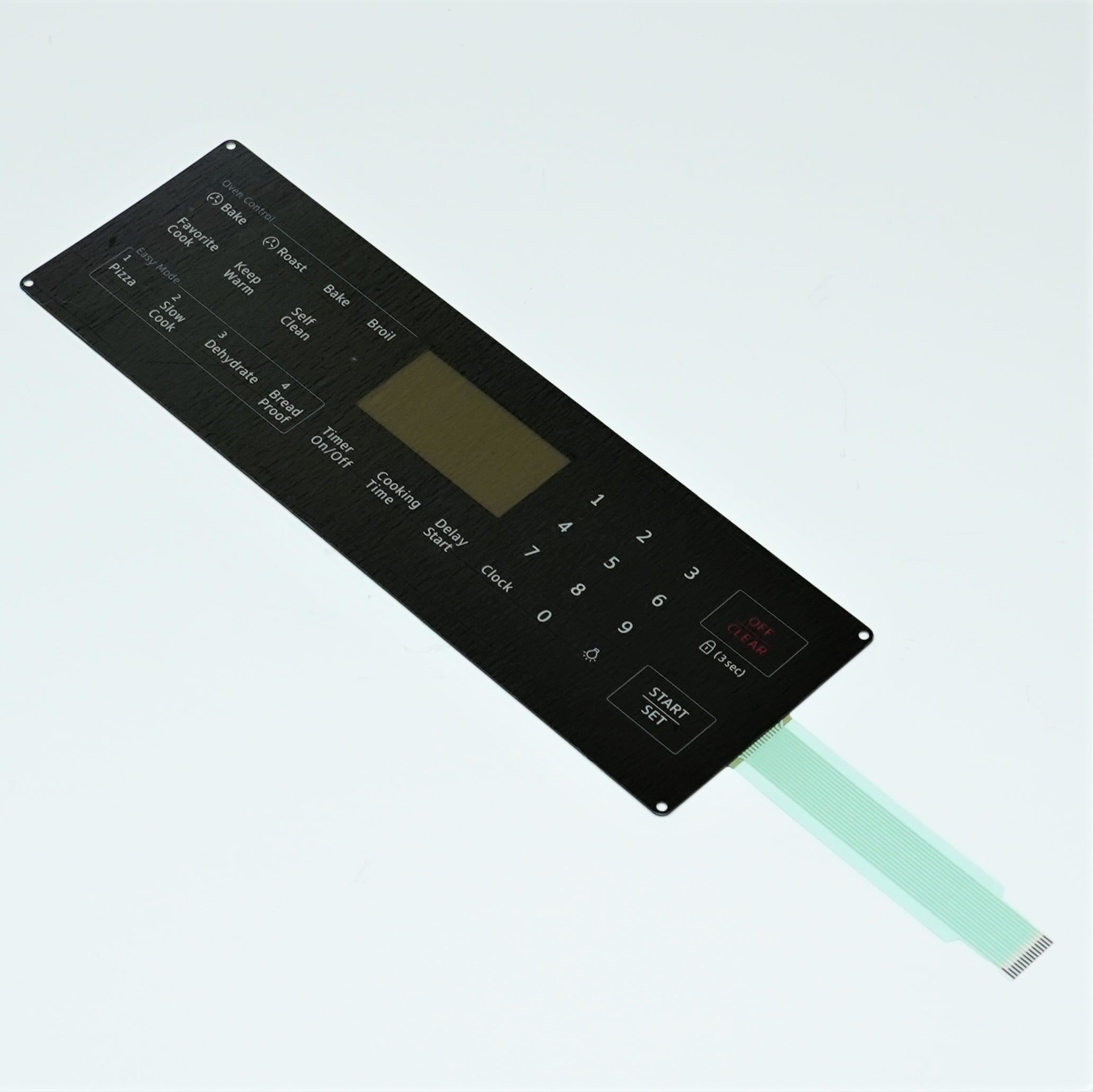Membrane Switch: A Comprehensive Guide to Its Uses and Applications
Membrane Switch: A Comprehensive Guide to Its Uses and Applications
Blog Article
Comprehending Membrane Switches: The Secret to Dependable and long lasting Controls

What Are Membrane Layer Buttons?
Membrane switches are an innovative solution in the realm of interface modern technology, integrating capability and layout effortlessly. These tools serve as an interface in between users and electronic systems, integrating a number of elements into a small layout. Generally built from versatile, slim layers of products, membrane switches are developed to respond to touch, allowing individuals to engage with equipment and digital tools efficiently.
The main aspects of a membrane switch consist of a printed circuit layer, graphic overlay, and a spacer layer that stops unexpected activation. The graphic overlay can be personalized to reflect brand identity or user preferences, boosting visual appeals while ensuring usability. Membrane layer buttons are generally used in different applications, including clinical tools, consumer electronics, and commercial devices, owing to their toughness and resistance to ecological elements such as dampness and dirt.
One of the key advantages of membrane buttons is their ability to hold up against damage, making them excellent for high-traffic settings. Furthermore, they are lightweight and call for minimal area, permitting for ingenious styles in product advancement. In general, membrane switches stand for a practical and reliable option for modern digital user interfaces, marrying modern technology with user-centric layout principles.
Just How Membrane Switches Work
The procedure of membrane switches over hinges on a simple yet reliable device that equates individual input right into digital signals. When a user presses the switch, the top layer warps, allowing a conductive aspect in the circuit layer to make call with a corresponding conductive pad on the bottom of the graphic overlay.
The style of membrane layer switches can vary, but they usually include domes or responsive aspects to offer feedback to the user, enhancing the overall experience - membrane switch. The materials used in membrane layer switches, such as polyester or polycarbonate, add to their sturdiness and resistance to ecological elements, consisting of moisture and dust. The published circuits are usually encapsulated, which protects them from wear and tear over time.
Advantages of Membrane Switches

Furthermore, membrane buttons are known for their durability. Built from robust products, they are immune to dirt, dampness, and physical wear, which considerably prolongs their lifespan compared to conventional mechanical buttons. This sturdiness makes them particularly ideal for high-traffic environments and applications requiring longevity.
One more substantial advantage is the simplicity of cleaning and upkeep. The smooth surface of membrane switches over minimizes dirt buildup and is typically impervious to spills, making them perfect for settings that require frequent sanitization.
Furthermore, membrane buttons supply a structured account, leading to a thinner layout that can be incorporated into numerous gadgets without adding mass. This attribute dig this not only improves the visual allure yet also contributes to an extra ergonomic product style.
Applications of Membrane Buttons
Easy to use and functional, membrane layer switches find applications throughout a vast array of industries, including medical devices, customer electronics, and industrial tools. In the medical area, these switches are indispensable to tools such as diagnostic devices, individual surveillance systems, and infusion pumps, where reliability and convenience of cleansing are vital. Their capability to preserve and withstand harsh settings capability makes them excellent for such applications.

In consumer electronic devices, membrane layer switches are used in products like microwaves, cleaning devices, and push-button controls - membrane switch. Their sleek style enables for instinctive customer interfaces, enhancing the general user experience while supplying sturdiness and resistance to tear and put on
Industrial tools additionally takes advantage of membrane layer buttons, especially in control panels for equipment and automation systems. These buttons offer defense versus dust and moisture, making certain regular efficiency in tough environments. Their customizable features allow manufacturers to tailor them to particular functional requirements, boosting effectiveness and capability.
Picking the Right Membrane Layer Change
When picking a membrane layer switch, it is essential to think about numerous factors that affect efficiency and viability for specific applications. The key factors to consider consist of environmental conditions, tactile responses, longevity, and layout specifications.
First, assess the operating setting; switches exposed to moisture, chemicals, or extreme temperatures call for details materials to make certain longevity and capability. Next off, assess the requirement for responsive feedback. Relying on individual communication, some applications might gain from a tactile reaction to validate activation, while others might choose a non-tactile design for visual reasons.
Sturdiness is one more critical factor; membrane switches need to be made to stand up to regular usage, impacts, and abrasion. Make certain the chosen button can endure the anticipated lifecycle, especially in high-usage situations.

Verdict
In verdict, membrane changes offer as vital parts in the style of sturdy and dependable control systems throughout various sectors. The convenience of membrane switches allows for customized services that fulfill specific functional demands, enhancing their significance in contemporary technology.
Membrane layer switches over represent an essential aspect of content modern user interface style, blending capability with durability in different applications.Membrane buttons are an advanced service in the world of user interface innovation, integrating capability and style perfectly. Normally constructed from adaptable, slim layers of products, membrane layer switches are created to react to touch, enabling customers to interact with equipment and electronic tools successfully.
The design of membrane layer buttons can vary, yet they frequently incorporate domes or tactile aspects to provide comments to the user, improving the overall experience.In verdict, membrane changes serve as essential elements in the style of reliable and durable control why not try here systems across various industries.
Report this page